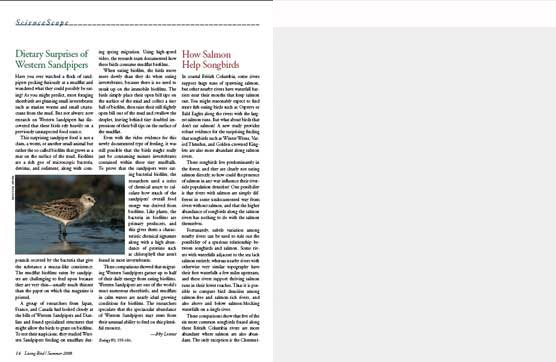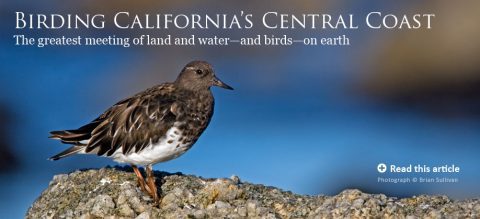How Salmon Help Songbirds
By Irby Lovette, director of the Fuller Evolutionary Biology Program
July 15, 2008
In coastal British Columbia, some rivers support huge runs of spawning salmon, but other nearby rivers have waterfall barriers near their mouths that keep salmon out. You might reasonably expect to find more fish-eating birds such as Ospreys or Bald Eagles along the rivers with the largest salmon runs. But what about birds that don’t eat salmon? A new study provides robust evidence for the surprising finding that songbirds such as Winter Wrens, Varied Thrushes, and Golden-crowned Kinglets are also more abundant along salmon rivers.
These songbirds live predominantly in the forest, and they are clearly not eating salmon directly, so how could the presence of salmon in any way influence their riverside population densities? One possibility is that rivers with salmon are simply different in some undocumented way from rivers without salmon, and that the higher abundance of songbirds along the salmon rivers has nothing to do with the salmon themselves.
Fortunately, subtle variation among nearby rivers can be used to rule out the possibility of a spurious relationship between songbirds and salmon. Some rivers with waterfalls adjacent to the sea lack salmon entirely, whereas nearby rivers with otherwise very similar topography have their first waterfalls a few miles upstream, and these rivers support thriving salmon runs in their lower reaches. Thus it is possible to compare bird densities among salmon-free and salmon-rich rivers, and also above and below salmon-blocking waterfalls on a single river.
These comparisons show that five of the six most common songbirds found along these British Columbia rivers are more abundant where salmon are also abundant. The only exception is the Chestnut-backed Chickadee, which has similar densities at both kinds of sites.
Further consideration of this finding suggests that it is perhaps not as far-fetched as it at first might seem. There are at least two ways in which salmon runs might drive up songbird densities. The first is by directly increasing the abundance of the insects upon which these birds feed. Decaying salmon carcasses provide rich food for midge and fly larvae, and the densities of these insects are known to be significantly higher along salmon streams. Insect-eating birds might well do better in areas where the salmon cause these particular insects to be abundant.
The second and perhaps more intriguing possibility is that the salmon influence the birds indirectly by enriching the entire riverside habitat. Because these anadromous fish live most of their lives in the sea but move up rivers to spawn and die, salmon take nutrients and energy from the ocean and transport them back upstream. Salmon carcasses enrich the streams where they die, and many carcasses are also spread around the adjacent forest by floods, predators, and scavengers.
The pulse of nutrients that the dead salmon provide thereby increases the productivity of the entire riverside habitat: increased nutrients from salmon cause greater plant growth, which supports greater fruit production along with more plant-eating insects, which in turn supports more songbirds.
The bodies of the birds themselves provide further support for this hypothesis: Winter Wrens that live along salmon streams carry a distinctive molecular signature in their tissues that is characteristic of nutrients derived from the sea. The annual spawning runs of salmon up the river are therefore the essential link in a chain of relationship connecting the ocean with deep-forest songbirds.
Reference: Christie and Reimchen. Presence of salmon increases passerine density on Pacific Northwest streams. Auk 125:51-59 (2008).

All About Birds
is a free resource
Available for everyone,
funded by donors like you
American Kestrel by Blair Dudeck / Macaulay Library



